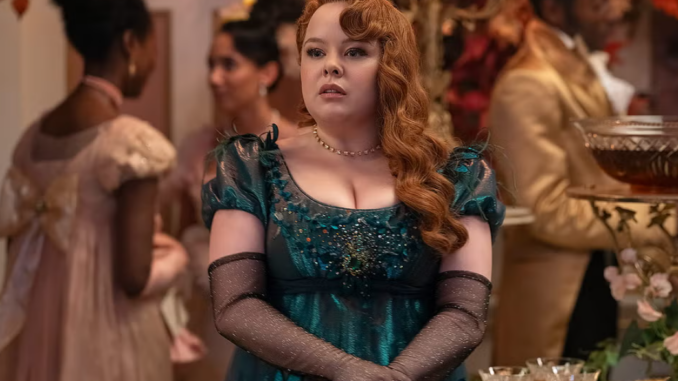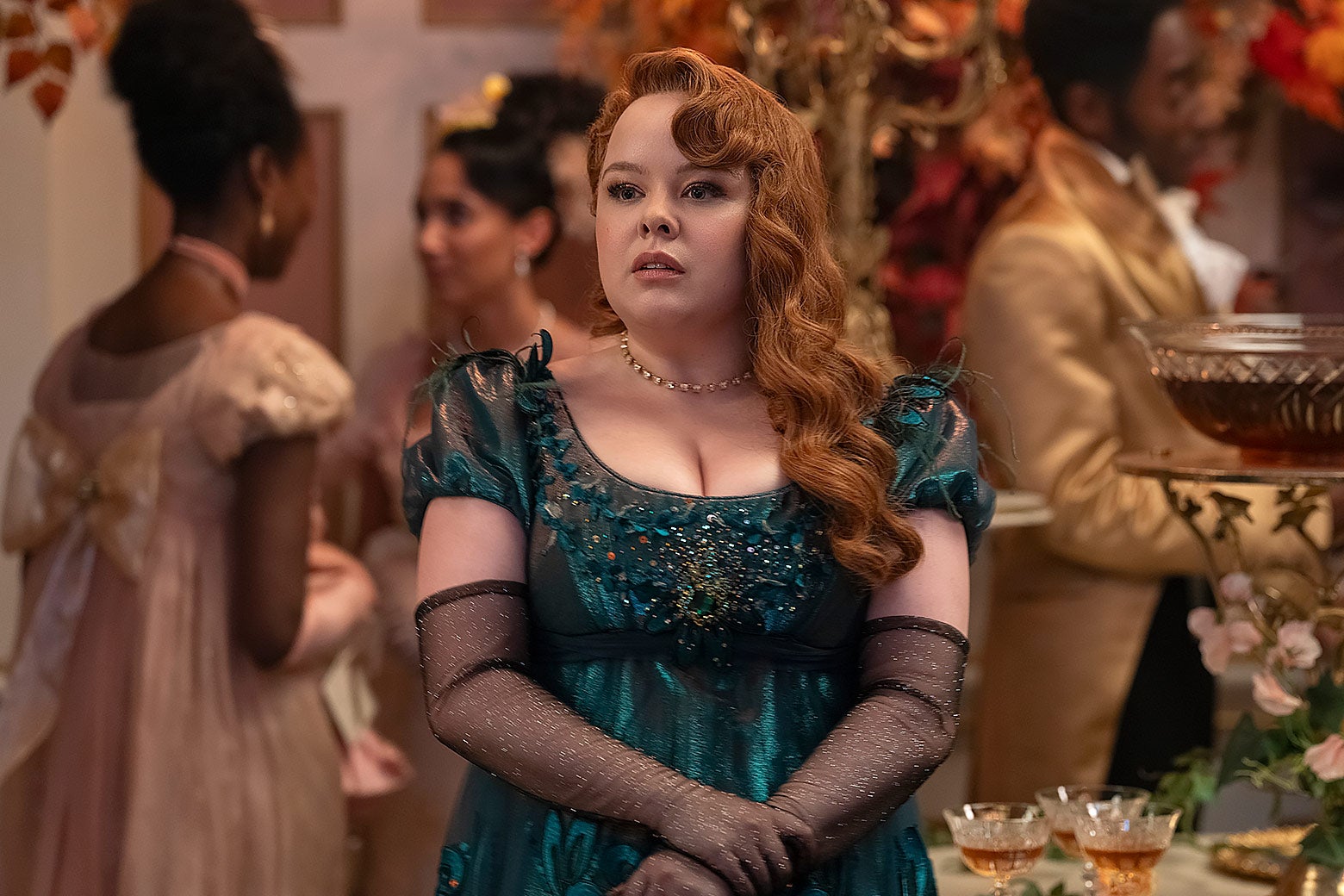
The Problem with Bridgerton Is Becoming Hard to Ignore
The new season of Bridgerton, in which fan-favorite gossip columnist Penelope Featherington (Nicola Coughlan) finally gets together with her long-time crush Colin Bridgerton (Luke Newton), is just like the last two seasons (or three, if you count the prequel, Queen Charlotte). Everyone is gorgeous, the dresses are gorgeous, the trees and vines are always perfectly trimmed and in bloom, and the action takes place in a London so lush and smoke-free that you’d barely know the story takes place during the Regency era.
All this glossiness is what we’ve come to expect from Bridgerton. The show’s controversially multiracial cast, along with some minor (and, to me, unconvincing) world-building details explaining black involvement in the aristocracy, create a sense that this world is a bit out of step with history, largely disconnected from time and place. On the plus side, that’s part of what makes it so fun, and other series, like Apple TV+’s The Buccaneers, have mimicked this playful vibe, to varying degrees of success.

This time, though, after watching the batch of episodes released as Part 1 of this new season, I—like Penelope “on the shelf”—confessed to being exhausted from standing on the edge of all these endless ballrooms, watching these lavishly dressed rich people dance and exchange glances as they talked. After about a fourth season, following the events at someone’s concert or someone’s lunch, I found myself craving a different setting and different stakes. The romance between Eloise Bridgerton and the young printer’s apprentice in season two was awkwardly done, but my God: I missed it. Just as there are no seasons other than spring in the world of Bridgerton, there are no truly poor, working-class, or middle-class characters on this show. Even the servants have no lives. Everything exists to move beautiful people on the dance floor. Of course, this is also what the source material – the Bridgerton novels, by Julia Quinn – is like. It’s rare for anyone who isn’t a member of the aristocracy, or at least a wealthy upstart like Penelope or the illegitimate child of an aristocrat, to be the focus of the plot. Questions of impending deprivation are kept on the margins of the story, hypothetical and never threatening to the Bridgertons, who, after all, are the people we care about. The family, thanks to their late father and then their meticulous brother Anthony managing their estate, are portrayed as financially secure. Their misfortune, if any, is only in their minds. For those outside the Bridgertons on page and screen, questions of bankruptcy loom but never seem to materialise. The second season’s heroine, Kate Sharma, has a “shopkeeper” father and needs to marry her sister off to a fellow shopkeeper to ensure financial support; the Featheringtons always seem to be struggling to avoid some kind of disaster. But the core of the story is one of comfort and plenty. Of course, this is also what the source material – Julia Quinn’s Bridgerton novels – is like. Rarely does anyone who is not a member of the aristocracy, or at least a nouveau riche like Penelope or the illegitimate child of an aristocrat, get to the heart of the plot. Questions of impending deprivation are always kept at the margins of the story, remaining hypothetical and never threatening to the Bridgerton family, who are, after all, the people we care about. The family, thanks to their late father and then their meticulous elder brother Anthony managing their fortunes well, are portrayed as being quite financially secure. Their misfortune, if any, is only in their minds. For the non-Bridgertons on page and screen, questions of bankruptcy often loom but never seem to actually happen. The second season’s heroine, Kate Sharma, has a “shopkeeper” father and needs to marry her sister off to a member of the aristocracy to secure financial support; the Featherington family always seems to be on the verge of some disaster. But the core of the story is comfort and affluence.
